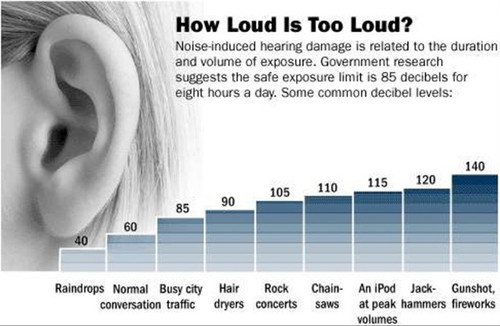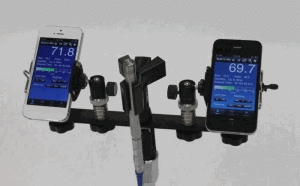How to Reduce Noise Pollution at Work
Average adults spend over 10.3 years (90,000 hours) at work in their lifetime. People's ears have different levels of sensitivity to loud sounds, especially at certain frequencies. Noise is one of the most common occupational hazards in workplaces: it causes hearing loss, creates stress, and contributes to work-related accidents. In industrial settings, where there is a constant background noise in addition to impulse noise, the danger of losing hearing increases. Most experts believe that damage to hearing occurs when noise levels are higher than 85 dB. That is why measuring sound levels at a workplace is essential!
Be informed
The U.S. Bureau of Labor Statistics provides annual statistics for occupational injuries. Three private sector industries had more than 100,000 days-away-from-work incidents in 2014: health care, manufacturing, and retail. What occupations are in the list of the most dangerous professions? Police, patrol and correctional officers, firefighters, nursing assistants, construction workers, and tractor/trailer/truck drivers. They lead in the number of work-related injuries: the incidence rate per 10,000 full-time workers in 2014 was more than 300, and the number of cases with days-away-from-work was more than 10,000. The hearing loss represented 12% of all cases submitted in 2012 through the survey of occupational injuries and illnesses.
Be smart
Some sound measurement apps for smartphones (for example, SPLnFFT, Noise Hunter, NoiSee) claim to revolutionize the noise level data collection and empowering people to make educated decisions about the safety of their environments. However, although they can be used to make a quick spot measurement when a sound meter is not available, they do not meet the criteria for accuracy, necessary for the occupational noise assessments.
Noise control requires knowledge of the relationships between the sound field, the sound pressure, and the sound power. In professional environments, sound level measurements are performed using type 1 or type 2 meters. The 29 CFR 1910.95 OSHA noise standards consider type 2 instruments to have an accuracy of ±2 dBA. To be compliant with the US occupational and environmental noise requirements, meters used to measure sound level at a workplace must meet ANSI type 2 specifications. The difference between the two meters lies in the microphone precision level. Type 1 can be safely used for outdoor noise monitoring due to the sensitivity of the microphone capsule, for example, in legal metronomy, when data is collected as evidence. Type 2 microphone works best for monitoring noise exposures for occupational hearing conservation programs and for basic acoustic measurements.
Be safe
Several types of instruments are available to measure noise levels at a workplace:
- a noise dosimeter - a sound level meter that measures the dose of noise
- a sound level meter - an instrument that converts the sound pressure in the air into the corresponding electronic signals
Sound level meters are capable of measuring the following:
- Equivalent Continuous Sound Pressure Level (LAeq)
- C-Weighted Peak Sound Pressure (LCPeak)
- C-Weighed Leq for selection of PPE using the HML method
- Octave band Leq values for selection of PPE using the Octave Band method
For most work environments, an integrating sound level meter that measures sound energy over a period of time is essential. If your workplace has harmful noise levels, plan ahead and wear hearing protection. PK Safety recommends wearing ear plugs and ear muffs as a preventive measure against hearing damage at work.
For more information about the hearing protection products, go to pksafety.com. Follow us on Twitter: @PKSafetydotcom
Recent Posts
-
Customizing Gas Detectors: Tailoring Solutions to Fit Your Unique Requirements
In today’s diverse industrial landscape, a one-size-fits-all approach to safety simply doesn’t cu …Jul 3rd 2024 -
10 Ways to Prevent Wildfires
You can prevent wildfires by extinguishing flames before you leave the worksite. Avoid practicing …Jul 1st 2024 -
ANSI/ISEA 138 Safety Gloves: Ensuring Hand Protection
The human hand is an anatomical masterpiece and arguably the greatest tool attached to our bodies …Jun 25th 2024






